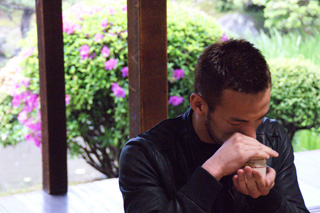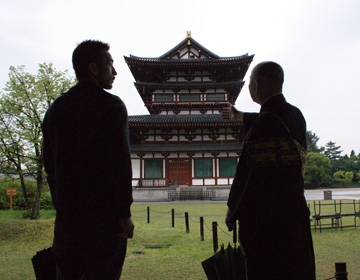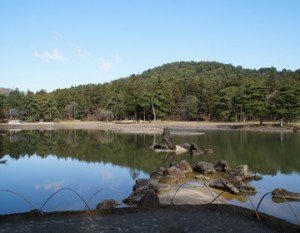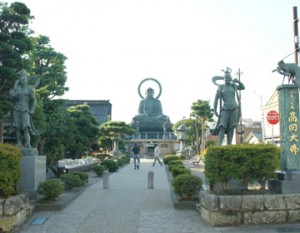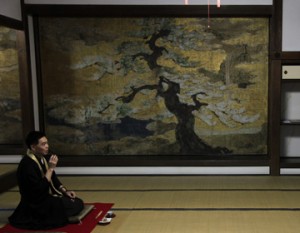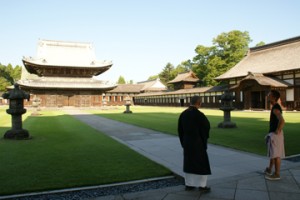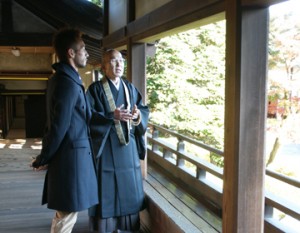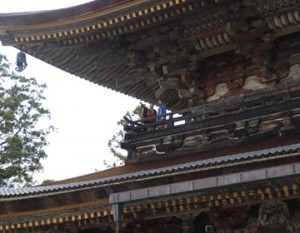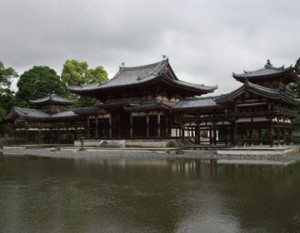Along with the transfer of Heijo-kyo
The construction of Yakushiji started in 680 under orders from Emperor Tenmu. It was originally located in Fujiwarakyo in Asuka, but was transferred later to Nishinokyo upon transfer of the capital, Heijokyo.
What is worshipped in the highest degree are the 3 statues comprising Yakushi at the main hall. Yakushi Nyorai is in the center, with Nikko Bosatsu and Gakko Bosatsu on either side. They are famous Buddhist statues, representing Buddhist sculptures of the Nara period, completing the unique traditional style, though having been influenced by Rikucho and Tang. It shows precise duplication of the round features of the human body, not at all fancy or lavish as other art of the Asuka period.
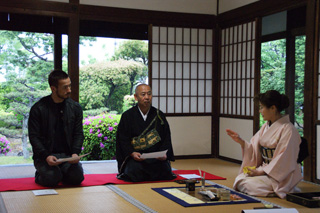
Becoming familiar with aromatic scents
Recently many artists hold concerts at Yakushiji and draw attention, but something else that is famous here are the ”aromatic ceremonies” called ”monkou”. Nakata participated in this ceremony.
Aromatic wood that had been used in Buddhist rituals are lighted, and the aroma is enjoyed. It is said to have started in 600, being a unique Japanese tradition. It is not the same as incense, which is lit directly, but most of the time the thinly cut aroma wood is placed on ashes in a furnace called ”monkoro”, and the fragrance is savored.
It is not as common compared to tea ceremony and flower arrangement, but the aroma that floats from the furnace can be precisely described by the word, ”hearing”. You may see that this is the kind of sensitive subtlety that has cultivated and formed Japanese culture.
